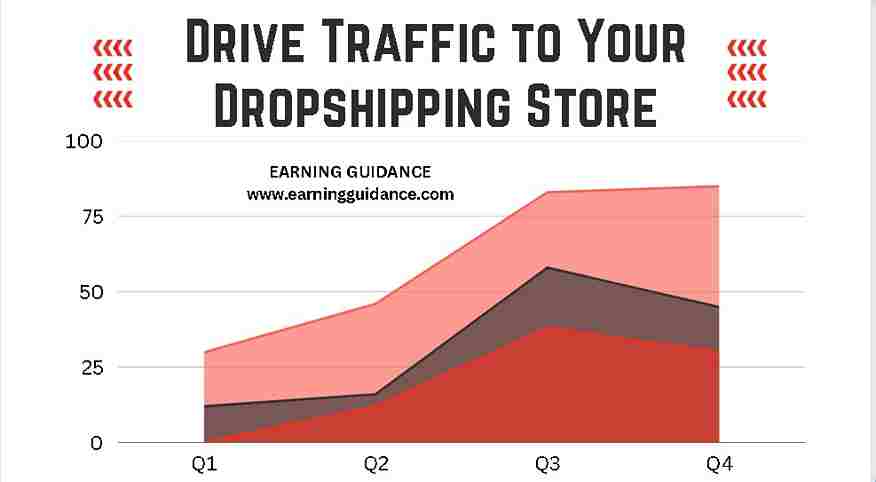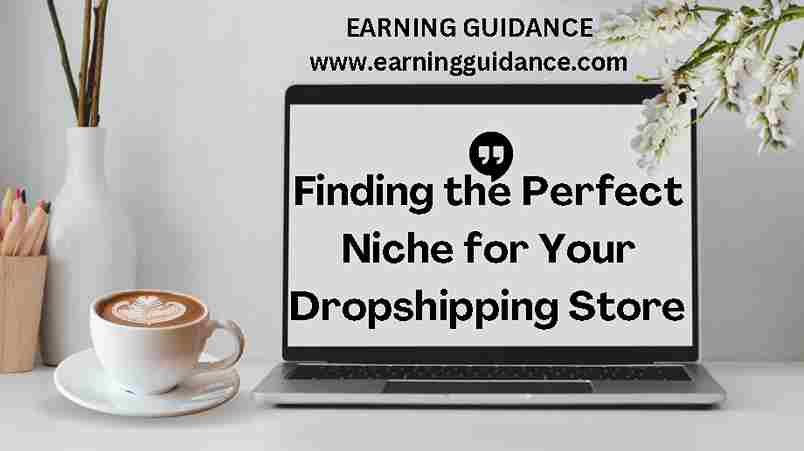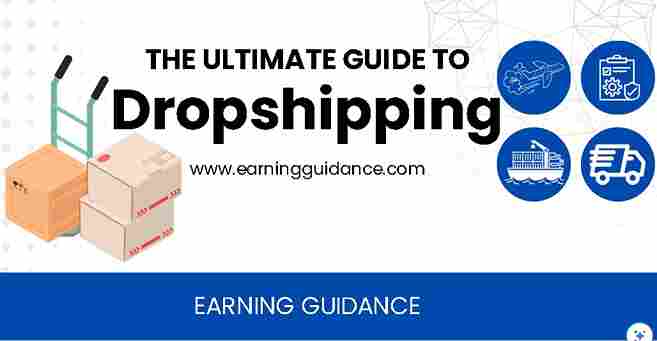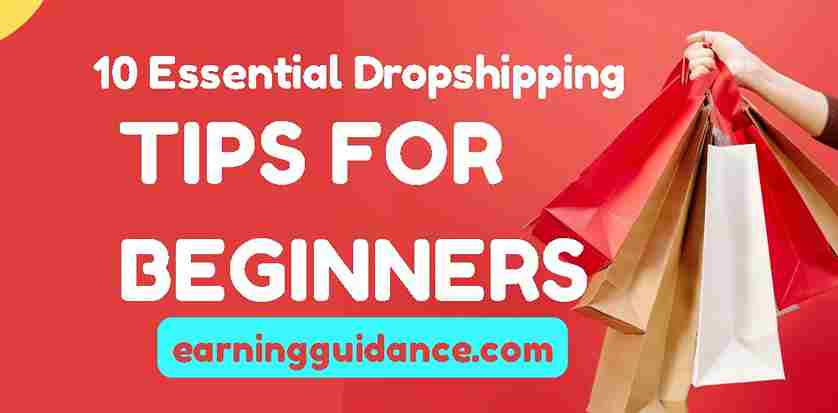Table Of Contents
Strategies to Drive Traffic to Your Dropshipping Store
Note: This article provides valuable strategies and techniques to drive traffic to your dropshipping store. Implementing these strategies can help you increase brand visibility, attract potential customers, and boost sales.
Introduction
Welcome to the world of dropshipping! As an aspiring entrepreneur or an established business owner in the dropshipping industry, driving traffic to your online store is crucial for success. It’s not just about any traffic, but high-quality traffic that consists of potential customers genuinely interested in your products.
In this article, we will explore various strategies to drive traffic to your dropshipping store. By implementing these techniques, you can increase brand awareness, attract targeted visitors, and ultimately, boost your sales and revenue.
Top Dropshipping Suppliers to Partner With
Search Engine Optimization
Search Engine Optimization (SEO) plays a crucial role in driving organic traffic to your dropshipping store. By optimizing your website for search engines, you can improve your visibility and attract relevant visitors who are actively searching for products or information related to your niche. Here are some key SEO strategies for dropshipping stores:
- Keyword research and optimization:
- Conduct thorough keyword research to identify relevant keywords with high search volume and low competition. Tools like Google Keyword Planner, SEMrush, or Ahrefs can help you discover valuable keywords.
- Incorporate these keywords strategically throughout your website, including in meta tags (title tag, meta description), headings (H1, H2, H3 tags), URLs, and content.
- Optimize your product titles and descriptions with relevant keywords to increase their visibility in search engine results.
- On-page optimization:
- Optimize your website’s meta tags by writing compelling and keyword-rich titles and meta descriptions. These tags appear in search engine results and can significantly impact click-through rates.
- Use proper heading tags (H1, H2, H3) to structure your content and make it more readable for both search engines and users.
- Create unique and informative content that provides value to your audience. Incorporate relevant keywords naturally within your content without keyword stuffing.
- Optimize your images by using descriptive file names and adding alt text that includes relevant keywords. This helps search engines understand the content of your images.
- Off-page optimization:
- Build high-quality backlinks from authoritative websites in your industry. Backlinks act as votes of confidence for search engines, indicating the relevance and trustworthiness of your website.
- Guest blogging on reputable websites can help you acquire backlinks while also increasing your brand exposure and establishing your authority in the industry.
- Engage with influencers, bloggers, and industry experts who can potentially link back to your website or share your content.
- User experience optimization:
- Ensure your website is user-friendly, easy to navigate, and loads quickly. A slow-loading website can negatively impact both user experience and search engine rankings.
- Optimize your website for mobile devices, as an increasing number of users browse the internet on their smartphones and tablets. Mobile-friendliness is a ranking factor in search engine algorithms.
- Improve your website’s overall usability by providing clear calls-to-action, easy-to-use navigation menus, and a well-organized site structure.
- Local SEO:
- If your dropshipping store targets specific geographic areas, implement local SEO strategies to increase visibility in local search results.
- Create location-specific landing pages or content that cater to the needs and interests of local customers.
- Register your business on Google My Business and other local directories to improve your online presence and visibility in local searches.
By implementing these SEO strategies, you can enhance your dropshipping store’s visibility in search engine results and drive organic traffic to your website. Remember that SEO is an ongoing process, and it’s important to monitor and adapt your strategies based on changes in search engine algorithms and user behavior.
The Best Platforms and Tools for Successful Dropshipping
Content Marketing
Content marketing is a powerful strategy for driving traffic to your dropshipping store and building a loyal customer base. By creating and sharing valuable and relevant content, you can attract and engage your target audience, establish your brand as an authority, and encourage conversions. Here are some effective content marketing strategies for your dropshipping store:
- Blogging and article writing:
- Start a blog on your dropshipping website and regularly publish informative and engaging blog posts related to your niche. Provide valuable tips, guides, product reviews, and industry insights.
- Conduct keyword research to identify topics and keywords that your target audience is searching for. Optimize your blog posts with relevant keywords to improve their visibility in search engine results.
- Share your blog posts on social media platforms, email newsletters, and other channels to increase their reach and attract traffic to your website.
- Creating engaging product descriptions:
- Craft compelling and unique product descriptions that highlight the features, benefits, and unique selling points of your products.
- Use persuasive language, storytelling, and emotional triggers to captivate your audience and encourage them to make a purchase.
- Incorporate relevant keywords naturally within your product descriptions to improve their search engine visibility.
- Video marketing and product demonstrations:
- Create product demonstration videos to showcase the functionality, usage, and benefits of your products.
- Share these videos on platforms like YouTube, social media, and your website to engage your audience visually and provide them with a more immersive experience.
- Consider incorporating influencer collaborations or user-generated content in your videos to amplify their reach and credibility.
- Social media content creation:
- Develop a content strategy for social media platforms that aligns with your brand’s voice, values, and target audience.
- Create a variety of content types, such as visually appealing product images, informative infographics, engaging videos, and user-generated content.
- Encourage social sharing by adding social sharing buttons to your product pages and blog posts, making it easy for visitors to share your content with their networks.
- User-generated content and customer testimonials:
- Encourage your customers to share their experiences with your products by leaving reviews, ratings, or testimonials.
- Showcase user-generated content on your website and social media platforms to build trust and authenticity.
- Run contests or campaigns that incentivize customers to create and share content featuring your products.
Remember, the key to successful content marketing is to provide value to your audience. Understand their pain points, interests, and desires, and create content that addresses those needs. Consistency is also crucial, so develop a content calendar and stick to a regular publishing schedule. Analyze the performance of your content using analytics tools to identify what resonates best with your audience and optimize your content strategy accordingly.
Finding the Perfect Niche for Your Dropshipping Store
Social Media Marketing
Social media marketing is an essential strategy for driving traffic to your dropshipping store, building brand awareness, and engaging with your target audience. With billions of active users on various social platforms, leveraging these channels can significantly boost your online presence. Here are some effective social media marketing strategies for your dropshipping store:
- Facebook advertising and organic reach:
- Create a Facebook Business Page for your dropshipping store and regularly post engaging content, including product highlights, promotions, and informative posts.
- Utilize Facebook Ads to reach a targeted audience based on demographics, interests, and behaviors. Consider using carousel ads to showcase multiple products in one ad or retargeting ads to reach potential customers who have already visited your website.
- Engage with your followers by responding to comments, messages, and reviews promptly.
- Instagram marketing and influencer collaborations:
- Set up an Instagram Business Account and share visually appealing content featuring your products. Use high-quality images, product videos, and Instagram Stories to showcase your products in action.
- Partner with influencers in your niche to promote your products to their followers. Influencer marketing can increase brand visibility and credibility.
- Use relevant hashtags to expand your reach and attract users interested in your niche.
- Twitter engagement and community building:
- Tweet regularly to keep your followers updated on new products, offers, and industry news. Use eye-catching visuals and concise, engaging copy.
- Participate in relevant Twitter chats and conversations to connect with potential customers and industry influencers.
- Retweet and engage with your followers’ content to foster a sense of community around your brand.
- Pinterest for product discovery and inspiration:
- Create visually appealing pins that showcase your products and lead users to your website.
- Organize your boards thematically, making it easy for users to browse and discover products based on their interests.
- Join group boards and collaborate with other pinners to increase the visibility of your pins.
- LinkedIn for B2B targeting and networking:
- If your dropshipping store focuses on B2B sales, LinkedIn is an excellent platform for networking and lead generation.
- Optimize your LinkedIn Company Page with compelling visuals and engaging content that showcases your products and industry expertise.
- Engage with industry-related groups and participate in discussions to establish yourself as an authority in your niche.
- Social media contests and giveaways:
- Run social media contests or giveaways to encourage user participation and increase brand visibility.
- Require participants to follow your social media accounts, share your content, or tag their friends to enter the contest.
- Offer attractive prizes to incentivize participation and generate excitement around your brand.
- Social media analytics and optimization:
- Use social media analytics tools to track the performance of your posts and campaigns. Analyze metrics such as engagement, reach, and click-through rates to understand what content resonates best with your audience.
- Use the insights gained from analytics to optimize your social media strategy. Focus on the platforms and content types that drive the most traffic and engagement to your dropshipping store.
Remember to maintain a consistent brand voice across all social media platforms and tailor your content to the preferences of each platform’s audience. Interact with your followers, respond to their inquiries and comments, and build meaningful relationships with your online community. Social media marketing is a dynamic and ever-changing field, so stay updated with the latest trends and adjust your strategies accordingly to drive more traffic and achieve business success.
Dropshipping vs. Traditional Retail: Pros & Cons
Influencer Marketing
Influencer marketing has become a powerful strategy for driving traffic and generating conversions for dropshipping stores. By collaborating with influencers who have a loyal following in your niche, you can tap into their audience and leverage their influence to promote your products. Here are some key considerations for implementing an effective influencer marketing strategy:
- Identifying relevant influencers in your niche:
- Research and identify influencers whose content aligns with your brand values and target audience. Look for influencers who have an engaged following and a high level of authenticity.
- Consider factors such as the influencer’s reach, engagement rate, content quality, and audience demographics to ensure a good fit.
- Reaching out and building relationships:
- Once you have identified potential influencers, reach out to them with a personalized message expressing your interest in collaborating.
- Highlight how your products align with their audience’s interests and provide them with a compelling reason to work with your brand.
- Offer clear terms of collaboration, such as product gifting, sponsored posts, affiliate partnerships, or exclusive discount codes.
- Negotiating collaborations and partnerships:
- Discuss the scope of the collaboration, including the type and number of posts, content format (e.g., Instagram photos, YouTube videos, blog posts), and timeline.
- Define the deliverables and ensure both parties have a clear understanding of expectations and guidelines.
- Negotiate fair compensation for the influencer’s efforts, considering factors such as their reach, engagement rate, and the complexity of the collaboration.
- Tracking and measuring influencer campaign performance:
- Set up tracking mechanisms to measure the success of influencer campaigns. Use trackable links or promo codes to monitor traffic, conversions, and sales generated through the influencer’s content.
- Analyze key metrics, such as engagement, reach, click-through rates, and conversion rates, to evaluate the effectiveness of each influencer partnership.
- Use analytics tools and insights to refine your influencer marketing strategy and identify the most successful collaborations.
- Leveraging user-generated content from influencers:
- Encourage influencers to create user-generated content featuring your products. This can include product reviews, unboxing videos, tutorials, or lifestyle shots.
- Repurpose this content on your own social media platforms or website to showcase real-life experiences and endorsements from influencers.
- User-generated content adds credibility to your brand and can attract more traffic as users see the products being used and recommended by influencers they trust.
- Maintaining long-term relationships:
- Building long-term relationships with influencers can yield ongoing benefits for your dropshipping store. Continuously engage and communicate with influencers to nurture these relationships.
- Offer exclusive promotions, early access to new products, or opportunities to collaborate on new campaigns to keep influencers engaged and interested in promoting your brand.
Remember to research and vet influencers carefully to ensure their authenticity and alignment with your brand values. Look for influencers who have an engaged audience that matches your target market. By leveraging their influence and credibility, you can drive traffic to your dropshipping store and gain exposure to a wider audience, ultimately leading to increased sales and brand recognition.
How to Start a Profitable Dropshipping Business from Scratch
Paid Advertising
Paid advertising is a strategic approach to driving targeted traffic to your dropshipping store quickly. By investing in paid advertising platforms and strategies, you can reach a wider audience, increase brand visibility, and drive potential customers to your website. Here are some key considerations for implementing an effective paid advertising campaign:
- Google Ads and search engine marketing (SEM):
- Google Ads is a powerful platform for targeting potential customers actively searching for products or information related to your niche.
- Conduct keyword research to identify relevant keywords that align with your products and target audience.
- Create compelling ad copy and optimize your landing pages to ensure a seamless user experience.
- Utilize ad extensions, such as sitelinks and callouts, to enhance your ads and provide additional information to users.
- Facebook Ads and audience targeting options:
- Facebook Ads allows you to target specific audiences based on demographics, interests, behaviors, and even previous interactions with your website or social media.
- Utilize the Facebook Pixel to track conversions, retarget visitors who have shown interest in your products, and create lookalike audiences to expand your reach.
- Experiment with different ad formats, such as image ads, video ads, carousel ads, or collection ads, to engage your target audience effectively.
- Display advertising networks and retargeting campaigns:
- Display advertising networks, such as Google Display Network or third-party platforms, offer a wide reach by displaying your ads on relevant websites across the internet.
- Use eye-catching visuals and compelling ad copy to capture the attention of users browsing other websites.
- Implement retargeting campaigns to reach users who have previously visited your dropshipping store but haven’t made a purchase.
- Customize your ads based on users’ past interactions to remind them of your products and incentivize them to return and complete their purchase.
- Influencer-sponsored posts and shoutouts:
- Collaborate with influencers to create sponsored posts or shoutouts promoting your dropshipping store and products.
- Influencer-sponsored posts can help you tap into their loyal followers and leverage their influence to drive traffic to your website.
- Choose influencers whose audience aligns with your target market to ensure maximum impact and relevance.
- Affiliate marketing and referral programs:
- Implement an affiliate marketing program where affiliates earn a commission for driving traffic and sales to your dropshipping store.
- Provide affiliates with unique referral links and promotional materials to share with their audience.
- Offer attractive commission rates and incentives to motivate affiliates to promote your products actively.
To optimize your paid advertising campaigns for maximum return on investment (ROI), consider the following tips:
- Set clear campaign goals and key performance indicators (KPIs) to measure success.
- Regularly monitor and analyze campaign performance, including click-through rates (CTR), conversion rates, cost per acquisition (CPA), and return on ad spend (ROAS).
- Test different ad variations, targeting options, and bidding strategies to optimize your campaigns.
- Use A/B testing to compare different ad creatives, landing pages, and calls to action to identify the most effective combinations.
- Continuously refine and optimize your campaigns based on data-driven insights.
Paid advertising can be an effective way to drive targeted traffic to your dropshipping store. However, it requires careful planning, monitoring, and optimization to ensure optimal results. By implementing a well-structured paid advertising strategy, you can increase your store’s visibility, attract potential customers, and generate sales for your dropshipping business.
Email Marketing
Email marketing is a powerful tool for driving traffic to your dropshipping store and nurturing leads. By building an email subscriber list and sending targeted and engaging emails, you can effectively communicate with your audience, promote your products, and encourage repeat visits. Here are some strategies to implement for successful email marketing:
- Building an email subscriber list:
- Create opt-in opportunities on your website, such as pop-up forms, signup forms, or exit-intent pop-ups, to capture visitors’ email addresses.
- Offer incentives, such as exclusive discounts or free resources, to encourage visitors to subscribe to your email list.
- Clearly communicate the benefits of subscribing, such as receiving updates on new products, special offers, and valuable content.
- Creating engaging newsletters and promotional campaigns:
- Send regular newsletters to your subscribers to keep them informed about new products, upcoming promotions, and relevant industry news.
- Personalize your emails with the recipient’s name and segment your email list to send targeted content based on subscribers’ preferences and behavior.
- Use eye-catching visuals, compelling headlines, and persuasive copy to capture the attention of your subscribers and encourage them to click through to your store.
- Include clear and prominent call-to-action buttons that direct subscribers to specific product pages or promotions.
- Personalization and segmentation for targeted messaging:
- Segment your email list based on various criteria, such as demographics, purchase history, or engagement level, to send personalized and relevant content.
- Tailor your emails to specific segments, addressing their interests, preferences, and previous interactions with your store.
- Leverage automation tools to set up email workflows and trigger emails based on specific actions or events, such as abandoned cart recovery emails or post-purchase follow-ups.
- Abandoned cart recovery emails:
- Set up automated emails to remind customers who have abandoned their shopping carts to complete their purchase.
- Include images and descriptions of the abandoned products, a clear call to action to return to the cart, and potentially offer incentives, such as discounts or free shipping, to incentivize a conversion.
- Customer loyalty programs and exclusive offers:
- Reward your loyal customers and encourage repeat purchases by offering exclusive discounts, early access to new products, or special promotions.
- Segment your email list to identify and target your most loyal customers with tailored offers and incentives.
To maximize the effectiveness of your email marketing efforts, consider the following tips:
- Use a reputable email service provider (ESP) to manage your email list, automate campaigns, and track performance.
- A/B test different email subject lines, content layouts, and calls to action to optimize open rates, click-through rates, and conversions.
- Monitor and analyze email metrics, such as open rates, click-through rates, and conversion rates, to gain insights into your campaign’s performance.
- Regularly clean your email list by removing inactive subscribers or those who have unsubscribed to maintain a healthy and engaged audience.
- Comply with email marketing regulations and ensure that subscribers have given consent to receive promotional emails.
This comprehensive guide from HubSpot provides valuable insights and best practices for effective email marketing campaigns. It covers topics such as list building, segmentation, personalization, automation, and email optimization.
Email marketing can be a highly effective strategy for driving traffic and conversions for your dropshipping store. By building a strong email subscriber list, creating engaging and personalized emails, and leveraging automation, you can nurture leads, promote your products, and build long-lasting relationships with your audience.
FAQ’s:
1. How can I improve my dropshipping store’s SEO?
Improving your dropshipping store’s SEO is crucial for increasing visibility and driving organic traffic. Here are some key strategies to enhance your store’s SEO:
- Conduct thorough keyword research to identify relevant keywords with high search volume and low competition. Incorporate these keywords into your website’s meta tags, headings, URLs, and content.
- Optimize your product descriptions, titles, and images with relevant keywords. Ensure your website has a clear site structure, easy navigation, and fast page loading speed.
- Focus on acquiring high-quality backlinks from authoritative websites in your industry. Consider guest blogging, creating valuable content that naturally attracts links, and engaging with influencers and bloggers.
- Provide a seamless user experience by optimizing your website for mobile devices, improving site speed, and enhancing overall usability. User-friendly navigation and clear calls-to-action can also positively impact SEO.
- If your dropshipping store targets specific geographic areas, optimize your website for local SEO. This includes creating location-specific landing pages, registering your business on Google My Business, and generating positive customer reviews.
2. What type of content should I create for my dropshipping store?
Creating engaging and informative content is crucial for attracting and engaging your target audience. Here are some content ideas for your dropshipping store:
- Blogging and article writing: Publish blog posts and articles that provide valuable information related to your products, industry trends, and customer interests. Use relevant keywords and optimize the content for SEO.
- Product descriptions: Write compelling and detailed product descriptions that highlight the features, benefits, and unique selling points of your products. Incorporate storytelling techniques and use persuasive language to capture the interest of potential customers.
- Video marketing and product demonstrations: Create engaging product videos or tutorials that showcase your products in action. Share these videos on your website, social media platforms, and product pages to enhance the customer experience and drive traffic.
- Social media content creation: Develop a content strategy for your social media platforms, including engaging visuals, informative posts, and user-generated content. Encourage user participation, share behind-the-scenes content, and run contests or giveaways to keep your audience engaged.
- User-generated content and customer testimonials: Encourage your customers to share their experiences and reviews of your products. Highlight positive customer testimonials on your website and social media platforms to build trust and attract new customers.
3. How do I choose the right social media platforms for my store?
Choosing the right social media platforms for your dropshipping store requires understanding your target audience and their preferences. Consider the following factors:
- Demographics: Research the demographics of different social media platforms to determine which aligns best with your target audience. For example, if your target audience is predominantly young adults, platforms like Instagram or TikTok may be more suitable.
- Engagement levels: Analyze the engagement levels and active user base of various social media platforms. Look for platforms where your target audience is actively participating, sharing content, and engaging with brands.
- Visual content: Consider the type of content you plan to create. If visual content, such as product images or videos, is a significant part of your strategy, platforms like Instagram, Pinterest, or YouTube may be more effective.
- Platform features: Evaluate the features and functionalities of different platforms. For example, if you plan to run paid ads, Facebook Ads offers robust targeting options, while LinkedIn may be more suitable for B2B targeting and networking.
- Competitor analysis: Research your competitors’ social media presence and identify the platforms where they are most active and successful. This can provide insights into which platforms are popular in your industry.
4. What are the key considerations for influencer marketing?
Influencer marketing can be a powerful strategy for driving traffic and building brand awareness. Here are some key considerations:
- Relevance: Choose influencers who are relevant to your niche and target audience. Their followers should align with your ideal customer profile to ensure maximum impact.
- Engagement and Reach: Consider the influencer’s engagement rate and follower count. Look for influencers who have an engaged audience and a significant reach to maximize the exposure of your brand.
- Authenticity: Ensure that the influencer’s values and content align with your brand image. Authentic partnerships are more likely to resonate with the audience and drive meaningful results.
- Collaboration: Build a strong relationship with influencers by reaching out, discussing collaboration opportunities, and defining clear goals and expectations. Mutual understanding and effective communication are key to successful influencer marketing campaigns.
- Measurement and Tracking: Establish clear metrics and KPIs to measure the success of your influencer marketing campaigns. Track important metrics such as website traffic, engagement, conversions, and ROI to evaluate the effectiveness of your partnerships.
5. How can I optimize my paid advertising campaigns for maximum ROI?
Optimizing paid advertising campaigns can help you achieve a higher return on investment (ROI). Consider the following strategies:
- Define clear goals: Determine your campaign objectives, whether it’s driving website traffic, generating leads, or increasing sales. Clearly define your goals to align your advertising strategy.
- Target audience: Identify your target audience based on demographics, interests, and behaviors. Use targeting options provided by advertising platforms to reach the most relevant audience for your products.
- Ad creatives: Create compelling ad creatives that grab attention, convey your unique selling propositions, and encourage clicks or conversions. Use high-quality images, persuasive copy, and clear calls-to-action.
- A/B testing: Experiment with different ad variations to identify the most effective elements. Test different headlines, visuals, ad formats, or landing pages to optimize your campaign performance.
- Budget optimization: Monitor your ad spend and analyze the performance of different campaigns, ad sets, or keywords. Allocate your budget to the most successful campaigns and adjust bids based on performance.
- Conversion tracking: Implement conversion tracking to measure the effectiveness of your paid advertising campaigns. Track important metrics such as click-through rates, conversion rates, and cost per acquisition to evaluate ROI.
By implementing these strategies, you can optimize your paid advertising campaigns to maximize ROI and drive valuable traffic to your dropshipping store.
Conclusion
Driving traffic to your dropshipping store requires a multifaceted approach. By implementing a combination of strategies such as SEO, content marketing, social media marketing, influencer marketing, paid advertising, and email marketing, you can increase your store’s visibility and attract potential customers.
Remember, there’s no one-size-fits-all solution. It’s essential to experiment with different strategies and analyze the results to find what works best for your specific niche and target audience.
Implement the strategies outlined in this article, and continuously track and measure your efforts to optimize your traffic generation. Stay updated with the latest trends and adapt your approach accordingly.
By consistently applying effective traffic generation strategies, you can boost the visibility of your dropshipping store, attract quality traffic, and ultimately achieve greater success in the competitive world of ecommerce.












